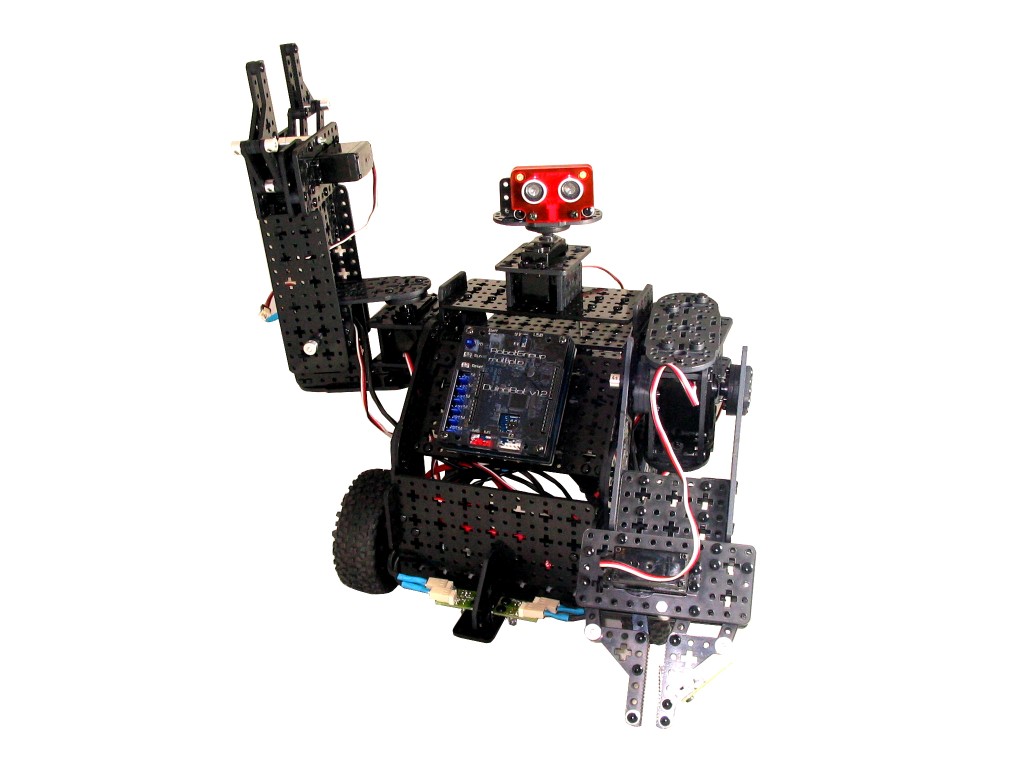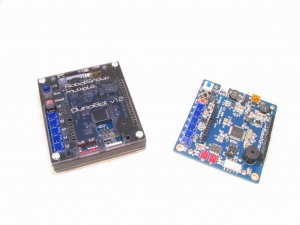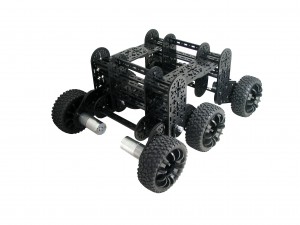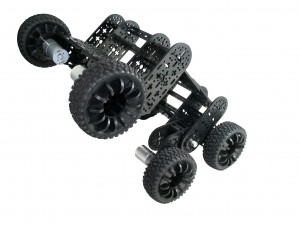MULTIPLO OPEN SOURCE ROBOTIC KITS
Julian da Silva is up to something again. He’s about to turn the open source community on its ear. Julian just launched a new Kickstarter campaign to bring robots to the open source world. He teamed up with some of his friends to form Multiplo LLC., a Florida-based company which produces open-source robot kits with Arduino compatible brains.
I caught up with Julian as his Kickstarter campaign kicked off and asked him about his plans to use Crowd funding to put open source robots in kid’s hands.
“We released Multiplo on Kickstarter yesterday. Multiplo is an open building system. It was designed specifically to allow users to add their own parts to the system. You don’t need expensive molds or extrusions to make these robots. They can be made with a laser cutters, CNC machine or 3-D printers. We wanted to make it this way because these are tools which you can find in most Fablabs or hacker spaces. The goal is to make a very generic building system which is easily upgradable with compatible parts that the user can fabricate. We want to make it so the students will be able to make robots without having to spend thousands of dollars to have special parts made. After the campaign is over we will be releasing all the files and information needed for people to create their own Multiplo systems. We will release all the DXF files so you can modify the parts or cut them with a laser cutter. Regardless of whether we make our funding, we will release the information.”
In order to be a success, Multiplo will have to raise $15,000 in a month. So Multiplo’s Kickstarter campaign has raised nearly $11,000 in one day. For those who are not familiar http://Kickstarter.com is a website that allows ordinary people to fund the development of a product or services. A pledge guarantees the contributor one of the first products produced if the project is reaches its funding goal. Crowdfunding allows small business to compete on a level playing field with big companies.
MULTIPLO NS KIT
I asked Julian to tell about the new Multiplo NS robotics kits. “The Multiplo NS kit will include everything you need to make a robot. It will include a Duinobot v1.2 Arduino compatible microcontroller, two geared DC gear motors, a remote control, 2 sensors and all the mechanical parts and hardware needed to build a robot. The kit is designed to appeal to makers and students. I hope it will encourage school children to explore robotics.” There will also be a deluxe kit available which will include enough parts to assemble a gripper arm.
MINIBLOQ
Julian da Silva is no stranger to Kickstarter programs or Open Source projects. In 2011 he launched Minibloq, a graphical user interface and programming environment for Arduino microcontrollers. Minibloq lets people program Arduino without having to write code. Simply drag and drop blocks of code into place, do some minor editing and you have a program. Minibloq has gained wide acceptance in the open-source community. Minibloq has been successfully ported to Windows, Mac, and Linux. In fact, there is even an iPad version in development.
Though Minibloq is designed to work with the Arduino family of microprocessors, It will also work with Duinobot and Maple devices. Using Minibloq is drag and drop simple. The user arranges control together to perform tasks. The user is prompted to enter values into the blocks. Based on the values entered, Minibloq generates source code that the Arduino can use. Multiplo uses Minibloq to program the robot’s Duinobot controller.
DUINOBOT BRAIN
Julian da Silva and his team at Multiplo were not satisfied by making the programming easier, they also wanted to make the controller easier to use. To make an Arduino compatible board that was easier to use, Multiplo had to make connecting things to the controller easier. They developed the Duinobot, a board that included easy to use color coded sensor and motor connectors, built in a DC motor control and dual voltage boosters, integrated speaker, buttons and a power switch.
The voltage boosters increases available voltage from 3.6 V to 12 V and 5 V. This allows you to power common 12 V DC motors and 5 V standard sensors with just three AA rechargeable Nickel metal hydride batteries or a Lipo cell. The Duinobot has an integrated a buzzer, user buttons and power switch. The power switch allows you to turn the robot off without having to remove the batteries, a real convenience. Though the Duinobot is tricked out with all these extra features, it still has standard Arduino Shield connectors for compatibility. All these features are protected by a rugged plastic case. Multiplo also plans to release a more powerful version of the Duinobot later.
Remote Control
Most people will use Minibloq software to program the brain of the robot. But for young children drag and drop may be too complicated. So Multiplo included a television style remote control device to program the robot. Most children know how to operate a remote control so it is an easy transition for them to use a remote to program robot.
WHY DOES HE DO IT?
Getting this kind of power into the hands of children is an educator’s dream. The sooner kids start playing with robots the more comfortable they become. Children who are comfortable playing with robots are more likely they are to pursue careers in science, technology, engineering or mathematics.
Multiplo products and Minibloq have been in wide use in the school systems of Argentina for the past two year. Multiplo now plans to open up robotics to the world.
I ask Julian da Silva why he felt the need to create open-source robots? His response was; “We are teachers. My whole team is teachers. We are teachers and we want to bring a new way to teach students about robots. We want to bring tools into the classroom that they can use right away, that are easy to use so they see results fast.”
“We started to design things that could be made with CNC because we didn’t have money to make molds. Quickly we saw that there were laser cutters so we began making parts with them. One day we realized we had something powerful. Because the necessity of making it compatible with this type of manufacturing techniques for prototyping made us build something that could easily be enacted by the users. Arduino was just starting and we liked the open source concept applied to hardware so we decided to make this (Multiplo) open source.”
“We are working hard to get the Multiplo parts out quickly. We have a lot of things designed liked you saw in the video but I wanted to give the backers very quick the rewards. So we worked a lot of hours on the campaign. We are working to make this available as quickly as possible. We want the backers to feel really good with their pledge to our campaign so we will do whatever we can to make fast delivery of the hardware.”
HOW CAN YOU HELP?
If you would like to support the Multiplo campaign you can become a contributor to the project before October 8, 2012 at:
To find out more information about Multiplo you can visit http://multiplo.org. Our newsletter will have more details about this interesting new project. Join our newsletter Here.




